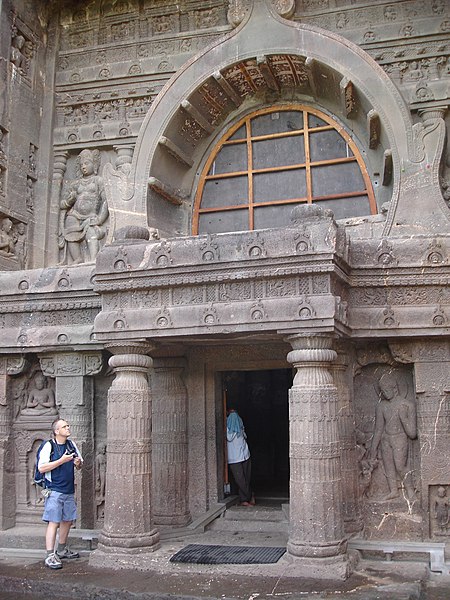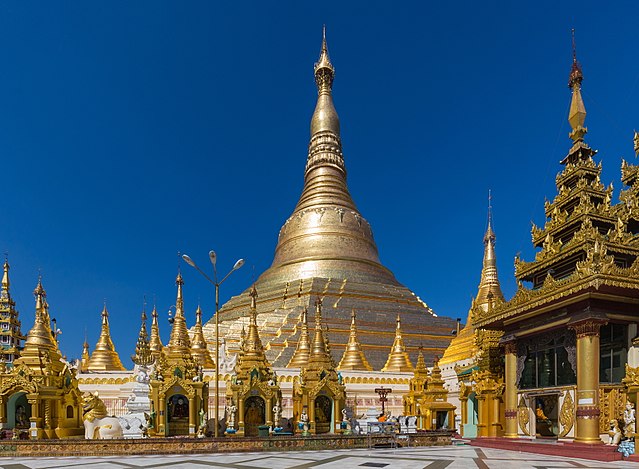A chaitya, chaitya hall, chaitya-griha, refers to a shrine, sanctuary, temple or prayer hall in Indian religions. The term is most common in Buddhism, where it refers to a space with a stupa and a rounded apse at the end opposite the entrance, and a high roof with a rounded profile. Strictly speaking, the chaitya is the stupa itself, and the Indian buildings are chaitya halls, but this distinction is often not observed. Outside India, the term is used by Buddhists for local styles of small stupa-like monuments in Nepal, Cambodia, Indonesia and elsewhere. In Thailand a stupa, not a stupa hall, is called a chedi. In the historical texts of Jainism and Hinduism, including those relating to architecture, chaitya refers to a temple, sanctuary or any sacred monument.
An early chaitya at Bhaja Caves; wooden architecture imitated in stone, with decorative roof timbers in wood. 2nd century BCE.
Outside the chaitya at Cave 19, Ajanta Caves, also with four zones using small repeated "chaitya arch" motifs.
Development of the chaitya arch from the Lomas Rishi Cave on, from a book by Percy Brown.
Drawing of the "Great Chaitya" at the Karla Caves, when built, in about 120 CE
In Buddhism, a stupa is a mound-like or hemispherical structure containing relics that is used as a place of meditation.
The Great Stupa of Sanchi, Madhya Pradesh, India
A stupa (chorten) in Samye, Lhasa, Tibet
Shwedagon Pagoda, Yangon, Myanmar
Ruwanweliseya, Anuradhapura, Sri Lanka








